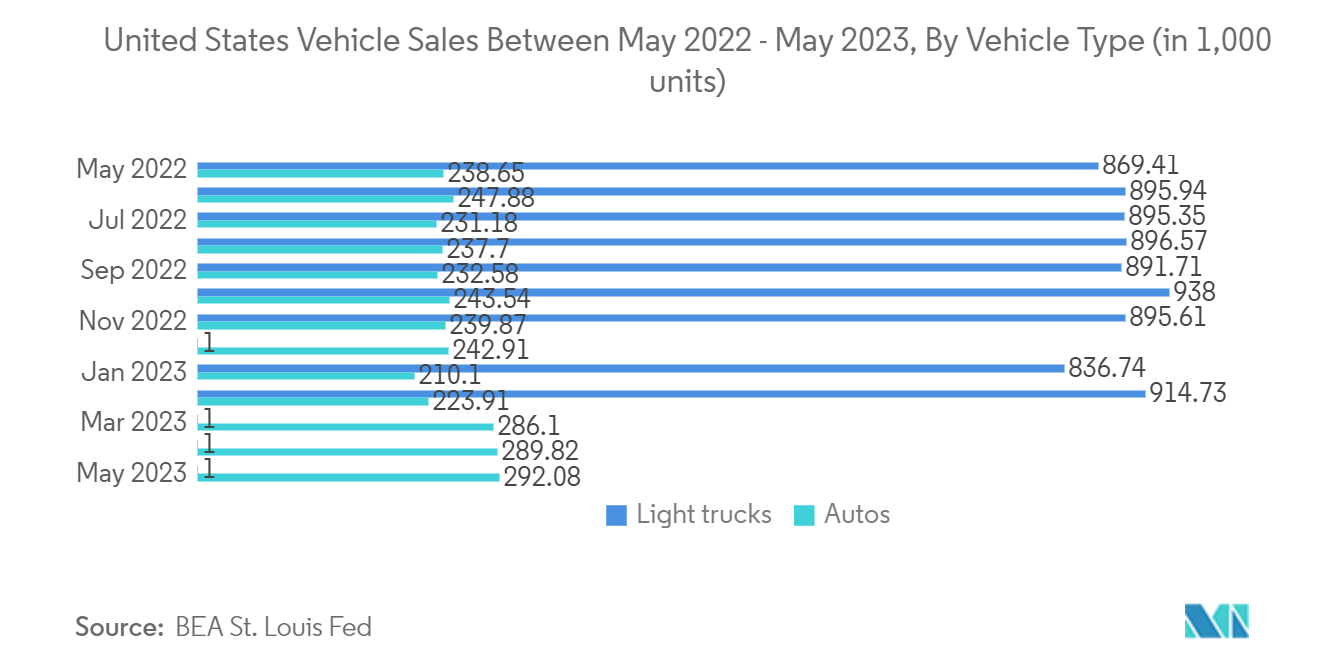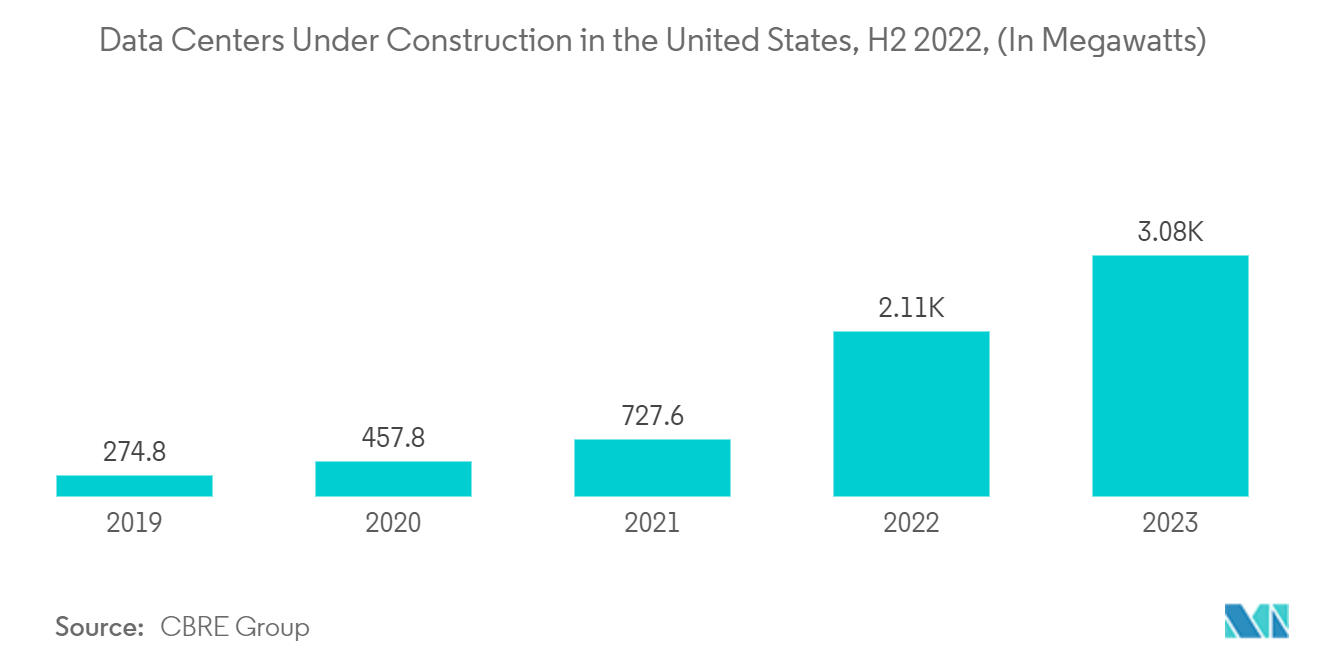Market Trends of Americas Dynamic Random Access Memory (DRAM) Industry
Automotive is Expected to Register Significant Growth
- The rapidly expanding automotive industry in the region is expected to propel the region's DRAM market size. The increasing demand for ADAS and self-driving vehicle systems in the United States, Canada, and Brazil is likely to increase DRAM production in the region.
- The region's fastest-growing application sector is ADAS, attributed to the rise in traffic accidents, which led to stricter safety regulations and increased demand for ADAS in the American market. The market demand for onboard storage and data processing is increasing with the introduction of next-generation instrument clusters that show detailed graphical gauge readouts on substantial, high-resolution color displays.
- These systems also need cutting-edge processors with large memory capacities and bandwidths. New rules are also anticipated to be implemented by the US government to safeguard the safety of drivers and passengers and stop common mistakes in automotive systems.
- In June 2022, Micron announced the expansion of its ecosystem and embedded product line that addresses data at the edge in the automotive markets. Micron declared that its LPDDR5 DRAM had received the first ISO 26262 Automotive Safety Integration Level (ASIL) D certification for memory. Similarly, the automotive industry is developing quickly due to the first LPDDR5 ISO 26262 ASIL D certification in the world.

United States May Dominate the Market During the Forecast Period
- In the United States, DRAM chip reliance is almost entirely placed on South Korea, which maintains roughly half the production capacity for DRAM chips worldwide. Further, China and Taiwan account for nearly half of global manufacturing. The nation requires faster-changing technologies, more effective processing systems, and high data generation across industries. Non-volatile, dense, and energy-efficient memories have become a top priority with the rise of mobile and low-power devices, high-end data centers, and large on-chip caches.
- According to Cloudscene, there were about 2,751 data centers in the United States in 2022. The data center is now the primary computing structure. Modern, secure accelerated data centers must have data processing units (DPUs) that can combine CPUs, GPUs, and DPUs into a single fully programmable computing unit. Additionally, Nvidia claims that data management uses up to 30% of the data centers' central processing units.
- Companies try to differentiate themselves from competitors by incorporating more powerful AI into their DPUs. The Santa Clara-based company introduced its line of data processing units, or DPUs, which can consolidate more of the infrastructure in data centers onto a single chip. On a single system-on-chip (SoC), the DPU combines programmable Arm CPU cores with a high-performance network interface.
- According to the GSMA, 5G will be the most widely used network technology in the United States by 2025. 5G will allow for the rapid transmission of large amounts of telecommunications data, implying that devices will require more storage. This factor would increase DRAM adoption. Verizon, AT&T, and T-Mobile Networks are actively investigating the commercial potential of 5G modems to provide broadband internet access to premises without the use of cable or xDSL cabling.
- The nation is seeing a lot of investments in semiconductors and electronics, which is helping expand the market studied. For instance, In November 2022, memory chip manufacturer Micron Technology Inc. in the United States began sending samples of its most advanced DRAM chip based on the LPDDR5X, low-power double data rate 5X, standard to smartphone makers for testing. Micron's most advanced manufacturing technique, known as 1-beta, was used to create the most recent DRAM chip. Currently, the company ships many LPDDR5X DRAM chips made with its 1-alpha technology.


